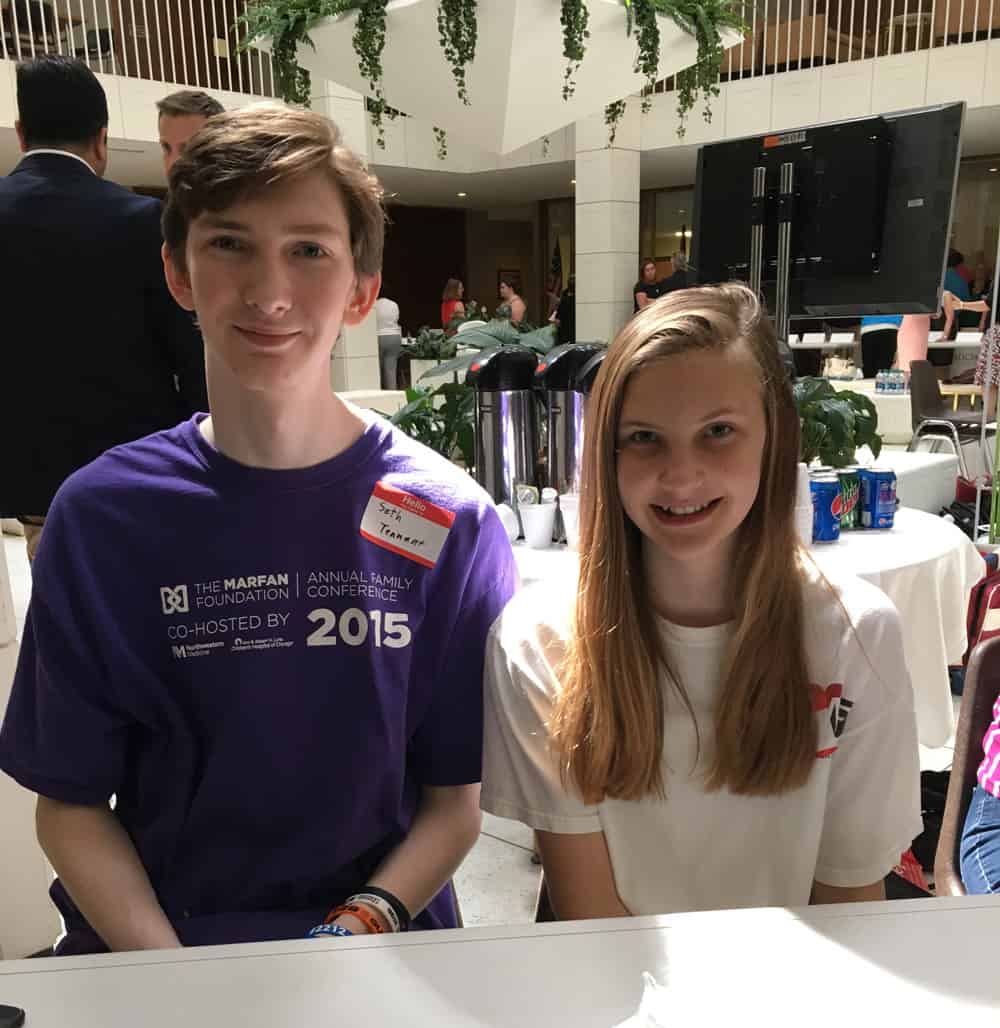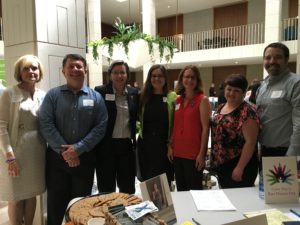Last summer, North Carolina became the first state in the nation to pass a law creating an advisory council for rare diseases. Now, collaborative efforts are looking for ways to increase awareness, offer better screening, and find treatments.
By Minali Nigam
For someone with a rare disease, meeting another person with the same disorder can be a one-in-a-million experience. But meeting another person with a rare disease isn’t rare at all.
About a million people in North Carolina have a rare disease — about one in ten.
“Many [rare diseases] are genetic, many are progressive, and unfortunately many of them are fatal,” said Dr. Bruce Cairns, president of the North Carolina Rare Disease Advisory Council.
That’s why researchers, clinicians, and patient advocates came together at the state legislature Tuesday, where they talked about current efforts to find cures and improve care for patients with rare diseases. Rare diseases are those that affect fewer than 200,000 people out of the 322 million people in the U.S., but often that number is even lower.
“For patients that have rare disease… 7,000 rare diseases, there’s not a lot of time,”said Cairns, who is also director of the North Carolina Jaycee Burn Center.
Kayte Thomas is a leader of the North Carolina Rare Disease Coalition, an organization that works with the Rare Disease Advisory Council and community advocacy groups. Her 10-year-old daughter was born with multiple, rare birth defects. Thomas said one of her daughter’s birth defects affects only one person out of every 2,229 people.
“But when you put her with a group of rare disease people she becomes one-in-ten affected,” Thomas said.
People with rare diseases, while fewer in number, have many needs, among them access to health care, stronger community support, and connection to treatment options, she said. Both people affected by the disease and family members need to learn how to advocate for patients.

After their father had an aortic aneurysm, which is common in people with Marfan syndrome, Seth Tennant, 16, and Analise Tennant, 14, were screened and diagnosed with the disorder, which weakens connective tissue. Working with The Marfan Foundation, Seth and Analise are trying to get high school athletes screened early on. Most people with Marfan syndrome tend to be “taller, more lean, and good at sports,” Seth says. Analise says she and her brother can no longer play sports because physical activity creates the risk of an aortic aneurysm rupture. “It affects our day-to-day life. My disease caused me to lose feeling in my legs, and I had to learn how to walk again,” Seth says. “So when our representatives read about these different bills they’re trying to pass, we’re hoping to put a human face to it.” Photo credit: Minali Nigam
Quality over quantity
For Fayetteville residents Leisa and Jim Greathouse, advocacy meant making day-to-day decisions about survival of their little boy. Their two-year-old son, Samuel died in 2007 as the result of an disorder in which white blood cells accumulate and attack a person’s own organs instead of fighting infection. The disease is called histiocytosis.
“Doctors come in and tell you the game plan and that you need to make decisions,” Leisa Greathouse said. “So we’re advocating for him the whole way. For us it was about quality of life versus quantity.”
She recalls that a doctor asked them to have Sam go through another CT scan, a procedure which would require their son to go as long as six hours without anything to drink. The Greathouses decided to forgo the CT, since they already knew Sam’s diagnosis.
However, Greathouse said, they were lucky that Samuel was diagnosed early, when he was 10 months old. He initially presented with “typical things that babies get.”
“He had an ear infection. He had a diaper rash,” Greathouse said. “Then, he started presenting other symptoms.”
“He was at his well-baby visit and his pediatrician was a sharp doctor and told us Samuel needed to go to UNC oncology.”
Greathouse says not all doctors have histiocytosis on their radar. She’s spoken with families who waited “months and months” to get the diagnosis or had to keep nagging their doctors about the rare possibility. According to a 2013 study, it takes an average of 7.6 years for someone in the U.S. with a rare disease to be correctly diagnosed.
“[Histiocytosis] is a disease unknown to the medical community at large. So we’re trying to raise awareness and educate doctors,” Greathouse said.
Council as a ‘catalyst’
In 2015, Gov. Pat McCrory signed into law House Bill 823, which received bipartisan support and passed unanimously in the House and Senate, to create the Rare Disease Advisory Council.
North Carolina is the first state to have a Rare Disease Advisory Council. Other states are now looking to follow North Carolina’s example with their own rare disease panels, including West Virginia.
“The hope is to collaborate with other states,” said Sharon King, who’s part of the NC Rare Disease Coalition and president of Taylor’s Tale, an organization she started to raise awareness of Batten Disease. Her daughter, Taylor was diagnosed with the condition, for which no treatments are available.
King says the process of getting the advisory council created has “been an amazing journey.” Taylor’s Tale played host to a legislative breakfast in March 2015, she said. House Bill 823 was proposed in mid-April, and signed in August.
“Today is actually a ‘Thank you’ to the legislators for passing this legislation,” King said of Tuesday’s confab.
Tara Britt is the associate chair for the NC Rare Disease Institute, a council composed of physicians, researchers, patient survivors, and patient advocates.

Members of the Rare Disease Coalition, (r to l) Sharon King, Van Daughtry, Leisa Greathouse, Kayte Thomas, Sandra Talbird, Sarah Kucharski and John Rista. Photo credit: Minali Nigam
“We’re in a network right now with UNC and Duke, but we’re also working with pharma, biotech,” Britt said.
U.S. Sen. Richard Burr (R-NC), is helping champion the cause at the federal level, she said.
The goals of the Advisory Council include better identification of rare diseases, the initiation of clinical trials for new drugs, their passage through the U.S. Food and Drug Administration, the development of treatments, and improved patient accessibility to those treatments, Cairns said.
“But how do you do that for 7,000 diseases?” he asked. “Well, you have to look at the whole system. We have a catalyst to bring everything together.”
Former North Carolina Attorney General Rufus Edmisten was stricken with Guillain-Barré syndrome in 2007, a rapidly progressive, degenerative neurological disorder that causes paralysis. Edmisten now serves on the Advisory Council.
“The main thing I think we’ve done is that we have a buy-in with the state government,” Edmisten said.
“We’re tying in official government resources along with private sectors and along with university resources. We’re searching for some common ground in the whole area of rare disease.”

Stay Connected
Sign up for updates straight to your inbox.
